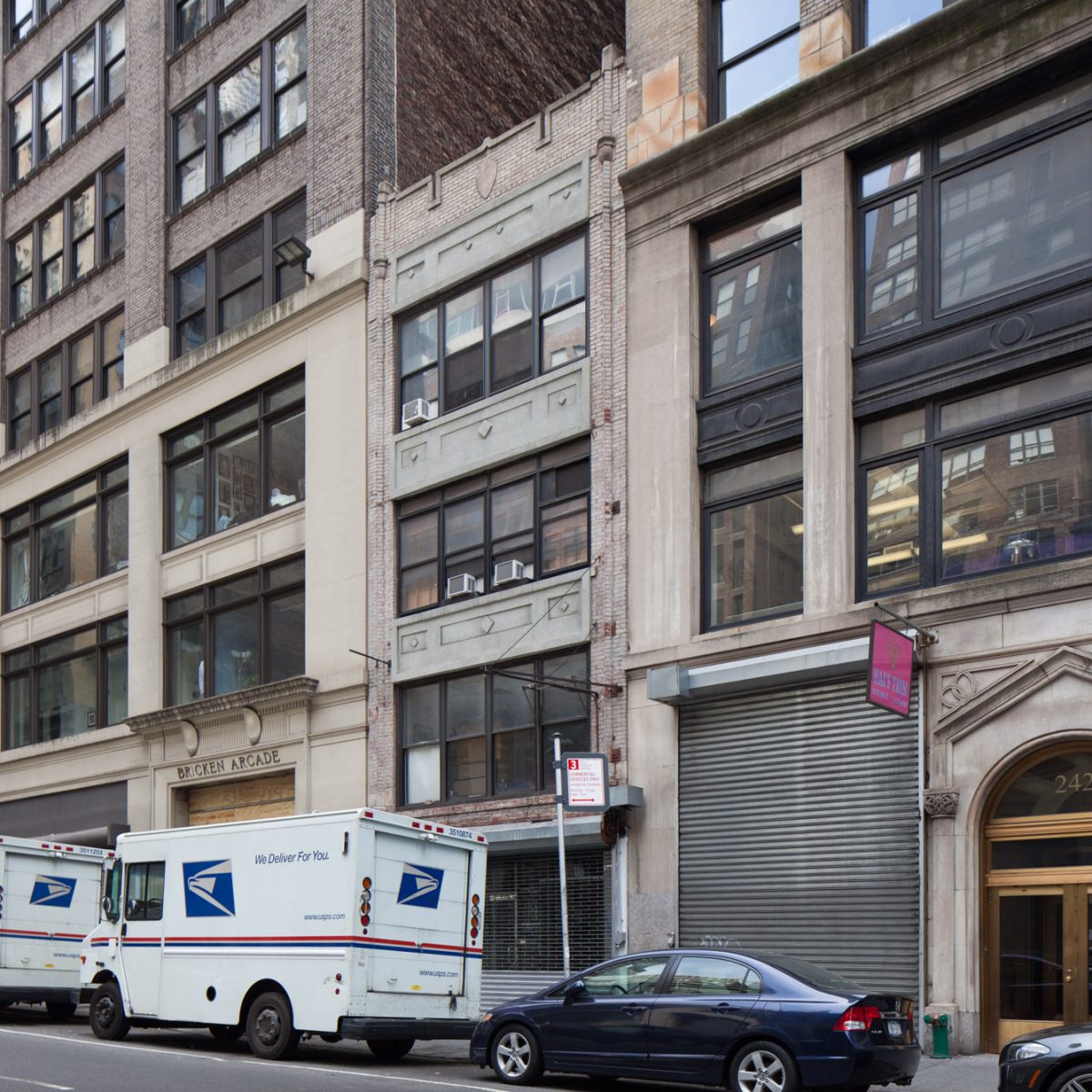
Isaia NYC Fashion House
overview
In 1986, Black fashion designer Isaia, known for his use of Lycra to create body-conscious styles for women, moved his clothing label to a loft in this building just as he was becoming one of the most sought-after young designers in the city.
Isaia’s career was cut short due to his death from AIDS-related complications in 1989, though his label, Isaia NYC, was located in this building until at least 1990.
See Corduroy Club for more information on this site’s LGBT history.
History
In the late 1980s, Black fashion designer Isaia (1954-1989) ran a showroom in this building, where his clothing line was also manufactured. Born Isaia Rankin, he was inspired by the success of Willi Smith, a New York City-based Black fashion designer, to move to the city in 1979 and pursue a career in fashion. Despite the fact that he had no prior training as a designer, he soon was given creative control at the Merchant of Venice, a clothing boutique in Soho.
Isaia became known for his use of Lycra to create body-conscious styles for women. The sex appeal of his clingy miniskirts, wrap tops, dresses, and accessories made him a sought-after fashion designer in the mid- to late 1980s. In a June 1987 New York Times article, he was touted as “one of the city’s brightest young designers” whose name was “everywhere.” Isaia’s clothing line was in high demand at several city retailers, most notably at Barney’s New York in Chelsea, but also in the uptown shops of Charivari and Fiorucci and the downtown shops of Patricia Field, Ibiza, and Modern Girls. His aesthetic was inspired by the 1960s, from the work of Jewish fashion designer Rudi Gernreich to the styles of the Motown group the Supremes.
From 1986 until at least 1990, the designer’s label, Isaia NYC, was located in a modest loft at 240 West 38th Street. On June 28, 1989, about a week after the opening of Fertility, an Isaia clothing boutique at 192 Spring Street in Soho, the 35-year-old designer died from AIDS-related complications at Lenox Hill Hospital. By the late 1980s, AIDS had devastated all levels of the city’s fashion industry (as it had in other arts-related fields), yet this was rarely, if ever, openly acknowledged at that time. Isaia’s fashion house, at first denying his death, would only publicly announce two weeks later that the cause was respiratory failure, with no mention that this was a result of complications from AIDS.
See Corduroy Club for more information on this site’s LGBT history.
Entry by Amanda Davis, project manager (February 2019).
NOTE: Names above in bold indicate LGBT people.
Building Information
- Architect or Builder: Benjamin H. Whinston
- Year Built: 1925
Sources
“1984-1985” and “1986-1987,” Manhattan White Pages.
“Black Style: Always in Fashion,” American Legacy, Vols. 4-5, RJR Communications, 1998, 28.
“Isaia Rankin Is Dead; Dressmaker Was 35,” The New York Times, July 11, 1989, A16.
Kimberly Chrisman-Campbell, “The Day AIDS Hit the Fashion Industry,” The Atlantic, April 24, 2015, bit.ly/2CVMKG3.
Michael Gross, “Young Designer’s Sexy Look,” The New York Times, June 23, 1987, B6.
Woody Hochswender, “Patterns: Isaia’s Company Prepares to Carry On Without Him,” The New York Times, July 11, 1989, B6.
Do you have more information about this site?
This project is enriched by your participation! Do you have your own images of this site? Or a story to share? Would you like to suggest a different historic site?




